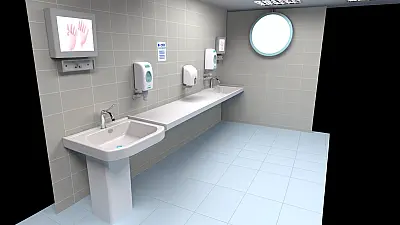RAPID CITY, SD - State health inspectors cited Avantara Arrowhead for failing to properly assess and treat a newly discovered pressure ulcer on a cognitively impaired resident, leading to a rapid deterioration of the wound that was later classified as a Kennedy terminal ulcer.

Multiple Staff Failures Delayed Critical Care
The March 5, 2025 inspection revealed a cascade of failures in the facility's wound care protocols when a certified nursing aide discovered a quarter-sized skin injury on a resident's buttock on February 20. Despite the facility's established procedures, three different nurses failed to follow proper assessment and treatment protocols over a critical four-day period.
The resident, who had been admitted in December 2023, was severely cognitively impaired and had multiple risk factors including stroke, diabetes, and stage IV chronic kidney disease. Her February 7 Braden scale score of 18 indicated she was at high risk for pressure ulcer development, making prompt wound care essential.
When certified nurse aide J first observed the new skin injury during personal care on February 20, she properly notified both the unit manager and the resident's assigned nurse, RN E. However, RN E failed to complete the required assessment despite being directly informed of the new wound.
Critical Assessment and Treatment Delays
The inspection revealed that RN E "was busy and failed to complete a skin evaluation" after being notified of the new injury. She also failed to ask for assistance from other licensed nurses working that day to ensure the assessment was completed. Additionally, RN E did not notify the resident's physician or obtain treatment orders for the skin injury.
The situation continued to deteriorate when RN F conducted the resident's weekly skin assessment on February 22. Despite noting "Area on both buttock[s] is still there," RN F failed to document measurements or descriptions of the new skin injury and did not notify the physician for treatment orders.
During the evening shift from February 22-23, when RN G was told the resident's buttock dressing was coming off, she discovered she had not been informed about the skin injury. RN G then measured the wound at 5 centimeters by 5 centimeters but failed to initiate wound care standing orders while waiting to reach the physician during business hours.
Rapid Wound Deterioration and Medical Classification
By February 24, when the wound was first properly measured, it had grown to 5 cm by 5 cm. The injury continued to expand rapidly, measuring 8.70 cm by 8.30 cm on February 25 and 8.20 cm by 8.00 cm on March 4 - representing more than a doubling in size within days.
A February 27 physician's progress note documented the severity of the situation: "Patient with progressive decline over the past several weeks, now with rapidly progressive ulcer to sacrum. Reviewed picture on HUCU, dark purple border, rapidly progressive over [the] past week and large necrotic appearing center."
The physician ultimately classified the wound as a Kennedy ulcer - a type of skin breakdown that occurs in people nearing end of life. While Kennedy ulcers are often unavoidable due to physiological changes during the dying process, the facility's failure to follow proper assessment protocols delayed appropriate care during a critical period.
Understanding Pressure Ulcer Care Standards
Proper pressure ulcer management requires immediate assessment when new injuries are discovered. This includes documenting the wound's site, stage, size, appearance, depth, and drainage characteristics. Healthcare facilities must also promptly notify physicians to obtain treatment orders and review the resident's care plan for additional risk factors.
The facility had established preventive measures for this high-risk resident, including a pressure-relieving mattress, pressure-reducing wheelchair cushion, protective heel boots, twice-daily protein supplements, and regular repositioning between meals. However, these preventive measures cannot substitute for proper assessment and treatment protocols when new injuries occur.
Standing wound care orders allow nursing staff to begin basic treatment immediately while waiting for physician consultation. These protocols are designed to prevent wound deterioration during the time it takes to reach medical providers, particularly outside regular business hours.
Facility Response and Corrective Measures
The assistant director of nursing was notified on February 24, and management conducted a root cause analysis of the incident. The facility implemented multiple corrective actions including staff interviews about repositioning compliance, education on skin injury protocols, comprehensive skin audits for all residents, and disciplinary action for involved staff members.
A certified wound therapist who reviewed the case confirmed that while the skin injury was likely unavoidable given the resident's condition, the facility had implemented appropriate preventive measures. The wound specialist agreed with the Kennedy ulcer classification based on the injury's size, appearance, and rapid development.
Additional Issues Identified
State inspectors noted that the facility's Skin and Pressure Injury Prevention Program included proper procedures requiring wound assessments when pressure injuries are identified, including documentation of wound characteristics, treatment initiation, and care plan reviews.
The inspection confirmed that the facility has since implemented comprehensive improvements based on their root cause analysis, including enhanced staff training and monitoring protocols to prevent similar incidents.
Full Inspection Report
The details above represent a summary of key findings. View the complete inspection report for Avantara Arrowhead from 2025-03-05 including all violations, facility responses, and corrective action plans.
💬 Join the Discussion
Comments are moderated. Please keep discussions respectful and relevant to nursing home care quality.